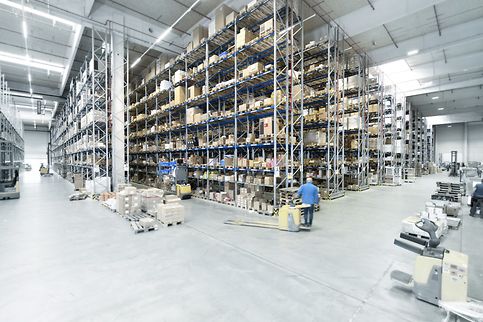Rack Reconfiguration – Dos and Don’ts
Daunting though it may be rack reconfiguration may be necessary with changes in product and SKU mix or with expansion in businesses. What was suitable when the racking system was first configured no longer applies and continuing to use it without making necessary changes may result in less than optimal warehouse performance.
Using case picking to fulfill small orders in a warehouse equipped with density pushback rack might not be economical in the long run for expanding industries that require fast turnaround. If the warehouse system is reconfigured to incorporate storage for pallets, high-density case storage, carton flow and shelving for each pick, you can safely expect 20-30% increase in productivity.
The need to reconfigure is far more common than you think, and it is increasing. The 2014 Warehouse and Distribution Center Survey by US magazine Logistics Management provides some indication.
Asked what actions they had taken to lower Distribution Centers operating costs over the past 12 months, respondents chose changing rack and layout configuration as one of the top options. At 49%, it ranked third after improving warehouses process (68%) and improving inventory control (60%). With an increase of 7%, it is also one of the highest increases over 2013.
Warehouse Redesign
What are the things you should bear in mind in your warehouse redesign? First, you have to decide what you are trying to achieve. If it is a simple case of ‘creating’ space to meet expanding warehousing requirements, the task can be accomplished without too much difficulty. Space can be found above cross aisles, above work and pick areas, above docks and even within the storage cube.
But if the redesign is prompted by changes in product and SKU mix, a more thorough review is needed. I like to propose that you consider the following before taking any action:
Measure the space you have to work with and take note of where the columns, walls, doors and clearances etc are
Fully comprehend the products you are dealing with as well as the throughput and replenishment requirements
Establish the material flow paths
Determine auxiliary facility requirements such as the administrative office as well as locations for staging, holding and inspection
Consider alternatives and evaluate them
Recommend and implement improvements
Safety Top Priority
In the drive to make better use of space, it is tempting to revise layouts, add extra beams to existing bays or splice extra height. In doing so you may inadvertently compromise the racking integrity.
The racking system is designed to a specific set of specifications and everything is interconnected. As any changes made can affect the frame loading, they should be carried out in accordance to the guidelines established by the manufacturer. It is prudent to exercise safety. Check with the manufacturer for the dos and don’ts before attempting to make changes. Or, download the full General Warehouse Safety Checklist here.
Sadly rack collapse can and do occur. When it does, it is damaging for the products stored within the warehouse as well as the reputation of the operator. Make safety a key priority.







